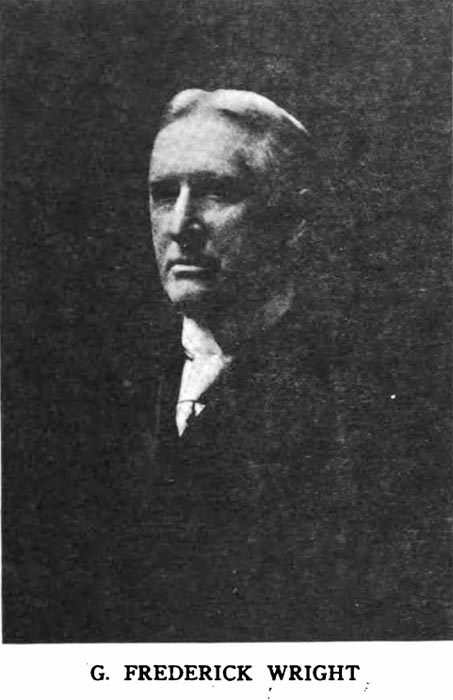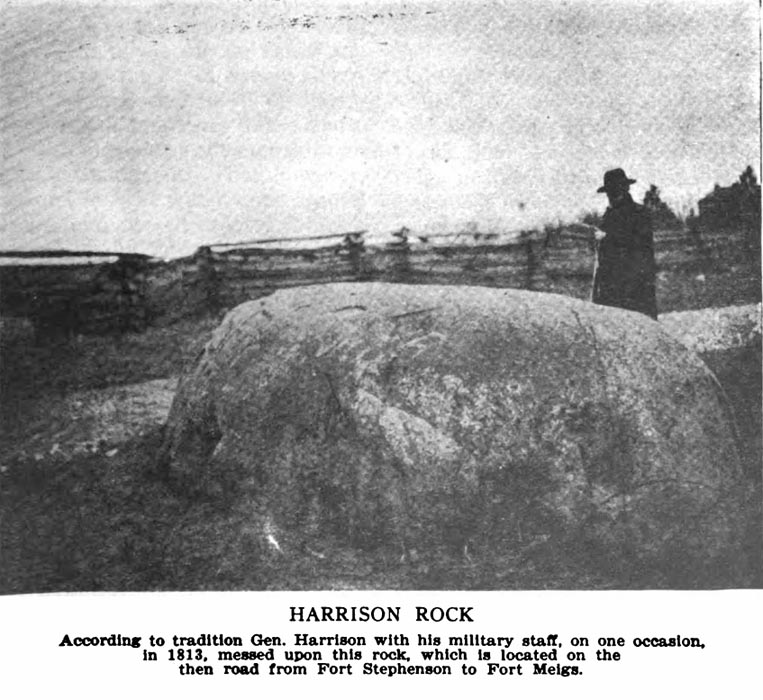|
Pg. 31 -
This
chapter, except that relating to Glacial Man, which was added
later by Dr. Wright, at request of the Editor, is taken
from the able and instructive address delivered at the Sandusky
County Pioneer and Historical Association, Sept. 8, 1908, by
G. FREDERICK WRIGHT, D. D., LL. D.., of Oberlin, Ohio,
president of the Ohio State Archaeological and Historical
Society. It is constituted a chapter of this volume with
his permission.
In coming to Fremont, we sat with a gentleman, who told
us a story of early days. He said that his grandfather in
the early part of the last century moved from Lower Sandusky to
Perrysburg, and that he started out with his ox team and went as
far as he could, the road being bad, and then walked back to
stay in Lower Sandusky over night; after which he went to his
team and wagon to resume his journey. It seems to have
been a custom of the early immigrants to do so, and that state
coaches would stop at night some miles out and tell the
passengers to walk the rest of the way to town to lodge for the
night, and then return to ride to town in the state the next day
if they chose to do so. What was the reason or cause of
these muddy roads? It was because they were built without
stone. From Monroeville to the Maumee River the country is
covered with the sediment of a former lake. If Lake Erie
should dry up it would leave a valley covered with a sediment
like this.
In early geological ages, the Gulf of Mexico extended
to this region. We are here on what is called the
Cincinnati Anticline of rocks, that run from the islands down to
Cincinnati. If we go down about 1300 feet we strike the
Trenton Limestone where we get the oil and gas. Then we
reach the Huronian and Laurentian rocks at an unknown depth
below. The rocks of this region are much younger and are
called the Water Lime like those on Put-in-Bay Island, deposited
when this was the bottom of the sea, which became filled with
sea shells and shell fish and a vast accumulation of marine
deposits. The superficial deposits here belong to the
glacial age. The chronology of the period is indicated by
the boulders found here. There is a large one,
called the Harrison Boulder a few miles southwest of Fremont,
Pg. 32 -
surrounded by other smaller ones.
This boulder is a species of granite from the oldest
land in the world. The highlands of Canada north of Lake
Erie is the place from which the glacial boulders in this basin
are derived. That rock is about from twenty-five to one
hundred and fifty millions of years old. But it was
transported here only 10,000 or 12,000 years ago. In size
it is 13 feet long, 10 feet wide and 3½
feet out of the ground, probably about one thousand cubic feet
of rock, and it would weight about one hundred and eighty
thousand pounds or 80 tons, and could be moved to Fremont as
there is no bridge between there and here to break down.
But it
Pg. 33 -


Pg. 34 - BLANK PAGE
Pg. 35 -
Pg. 36 -
GLACIAL MAN IN OHIO.
Pg. 37 -
|